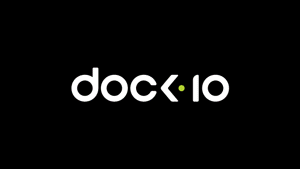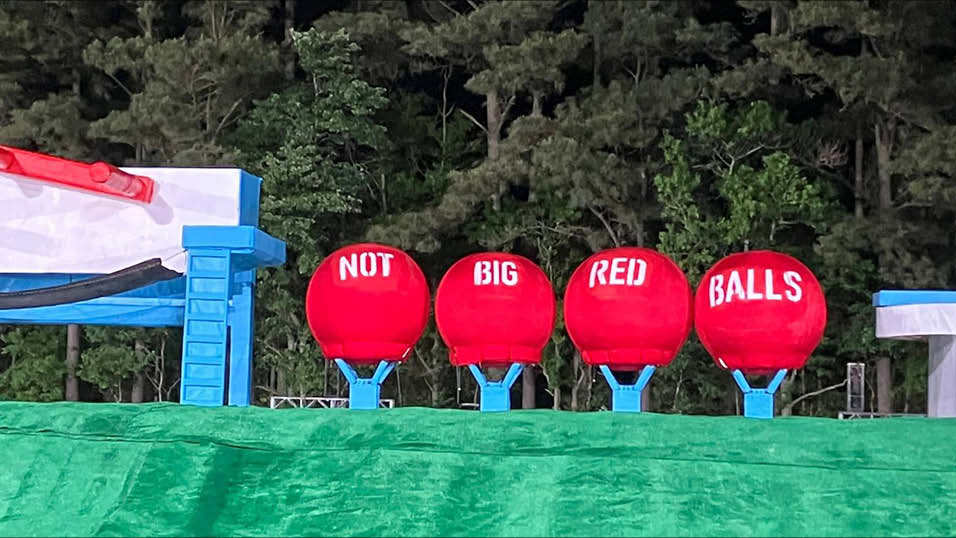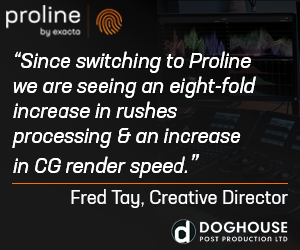Televisual invited a panel of senior production executives working across broadcast disciplines to discuss their technology choices, workflows and challenges. Here’s what they had to say.
Around the table were:
Shireen Abbott, Director of Production, Twofour Group
John Brennan, Group Chief Executive Officer, Procam
Jason Crosby, Chief Operating Officer, Monkey Kingdom
Helena Ely, Head of Production, Wall to Wall
Carl Hall, Managing Director, Warehouse 51 Productions
Rick Horne, Head of Post and Facilities, Two Four Group
John Jamieson, Commercial Director, Splice Post
Patrick Nelson, Territory Account Manager, Avid
Liz Pearson, Post production Supervisor, Freelance
Ruth Session, Senior Production Executive, Freelance
Natalie Triebwasser, Head of Production, Quicksilver Media
Claire Walker, Head of Production, Raw Cut
Which camera?
For most of our panel, each new production or series came with a deliberation over the choice of camera, with final choice dictated by budget, familiarity, resolution, reputation and broadcaster request. The desired final look was mostly a trade-off against ease of use, based largely on budget. Although there’s an ever greater range of cameras available on the market, the same makes and models were consistently name-checked in line with this year’s Production Technology Survey.
Jason Crosby (JC)
We like the Sony F3. That’s the main camera we’ve been shooting Made in Chelsea on for the last five-and-a-half years. Chelsea has a really good, consistent look that would be hard to replicate with another camera. We have tested a variety of other cameras but it works for us despite having to use a Nanoflash for 35 / 50 mb/s broadcaster requirements.
John Brennan (JB)
I think the sensor on the F3 is fantastic, but it doesn’t meet EBU standards. I would recommend the Canon C300. Canon has a history of photographic quality 35mm DSLRs, although the C300 Mark II is twice the price of the recent Sony FS7.
Claire Walker (CW)
Pretty much all of our shows have a different camera, generally because of the timing of when we start filming. Some of the challenges are budgetary. In 2012 we used the Canon 305s because they were small and robust. Then we moved over to the Sony EX range, Sony PMW200s, and now the new Sony PXW300s that are much better shooting at night. The FS7 doesn’t work for all of our shows due to the need to change lenses, although we do shoot with it.
Natalie Triebwasser (NT)
I like to be one step behind the bleeding edge. We used to have the 305s, then the Canon C300s. We’ve been asked to look at the FS7 for our next production. We’re also looking at the FS5 as it’s lighter.
JBThe FS7 is a proven field camera and 99% of hire companies stock this in preference to the FS5. As a rental house you always want to buy the best of the variants for your customers.
Rick Horne (RH)
We’ve just bought a couple of FS7s for a specific project where there was an option to go with the C300. I don’t believe for the programmes Natalie is probably making, it’s always going to be enhanced by changing camera. We’ve got some 305s that are slowly dying that have been brilliant. We’ve got some C300s, some XDCam, 700s and 800s, that I love and Panasonic mini-cams for rig shows.
Helena Ely (HE)
We shoot drama on the Arri Alexa. We’re now using the Alexa Mini for a drama / factual hybrid as it’s more flexible.
Ruth Sessions (RS)
A lot of people shoot dramas on high-resolution cameras so they can crop in. But you can’t if you’re delivering 4K. In docs, once tape came along people often used to shoot everything and worry about it in the edit. But with 3D or 4K, you can’t afford to, you have to control the shoot. The volume of data affects everything, including the choice of locations and fine-tuning the shots.
Liz Pearson (LP)
The Arri is a wall-to-wall camera. DoPs and graders like it because it has a greater latitude. Everything should be tailored to what you set the look to on set.
Carl Hall (CH)
For Animal Planet, we’ve got seven F55s shooting down in South Africa, which are brilliant. We’re also shooting an antiques series, mainly on the Canon 305s. When we shoot in the auction houses we only have a couple of days, so we shoot them in 4K and later zoom in to the detail and release footage back to the auction houses [for no money] and add value. 4K lenses are a bugger at the moment. They’re difficult to get hold of.
JB Most people shooting 4K aren’t using 4K lenses. At TLS we’re reconditioning vintage lenses. A lot of them are 6K and 8K ready, even though some of them are 35 years old. A “4K lens” is a marketing gimmick.
CH In wildlife we need lenses to hold focus, right to the edge of frame with no drop off and it’s very demanding. Discovery supplied us with these amazing Canon 50 – 1,000mm lenses but there are almost none of them available at the moment. They’re really difficult to get hold of.
Camera Wish List
Eliminating operator error, broadcast spec mini cams and ease of use were at the top of our panel’s wish list.
CW It would be nice to shoot with the Sony FS7 but not have the inconvenience of needing to change lenses. My main wish would be for a powerful mini cam.
RS A feature that eliminates operator error. It’s a production-threatening problem. You put in all sets of checks and balances.
LP Something to say, ”Is this what you really wanted?”
CH A chip you could write on to and install with all the main constraints and defaults to correct settings and see who’s on the camera.
NT Durability and to stop sand getting behind the lenses.
Shooting and Mastering in 4K and HDR
Most of our panellists weren’t being asked for 4K (or HDR) but those that were saw demand increasing in the very near future.
LP We’re already mastering in 4K for three shows for Netflix and Amazon. I think 4K’s going to go mainstream really quickly, within a year.
RS I think it’s horses for courses. Say you’re filming somewhere really iconic like the pyramids. You’ve got all sorts of re-versioning and clips sales potential if you own the rights. But if you’ve got presenters nipping in and out of every shot and you haven’t got the time to get the shots clean without them, it’s probably not worth it. If you can shoot certain scenes in 4K as a relatively small investment… you might be showing a city that doesn’t exist in time to come.
CH I shot in 4K for Area 51 (as we only had one day) so we could go back to the detail we saw in the hangar. When I ran a distributor business, we got in to HD when it first came in and when the HD channels came on stream, we simply re-mastered our programmes and sold them again with a mark-up. If you own your assets, you should look to shoot 4K. Look at all those old film masters now being re-mastered as 4K.
RS We’re behind the curve here. In the Far East, a lot is 4K and 8K and they want high frame rates. Have you got any 8K at 60 fp/s? But when broadcasters started commissioning HD, they only gave a 15% uplift.
LP 4K post adds an almost 50% mark-up. For Amazon we’re doing an HDR grade for future transmission in 4K as a dual delivery. As soon as we started shooting HDR, we did a test as you have to be careful with data cameras as you can get artefects under certain conditions. 4K monitoring on set is so important.
RS I agree. I’d rather not risk having an ineffective shoot day and write it off.
LP In the grade we do the SDR version first followed by the HDR. You’ve got to have an HDR monitor in the grade. I love the look of HDR but it can be incredibly unforgiving on make-up, hair, costume…
HE A bit like HD when it first came in….
JB I would say 4K acquisition is up 40% over the last year – mastering in 4K but not always delivering. If you look at Sky now, they’re asking for 4K, and will very soon be broadcasting in 4K. Any music concerts we support are always 4K. Once the consumer starts experiencing 4K HDR, everyone will have to catch up as watching HDR is more stunning than 3D: dynamic being the key word.
Editing Systems
Avid was all of the panel’s primary editing platform. Integrating Premiere within workflow was also discussed.
Patrick Nelson (PH)
Media Composer did have a complete revamp and is now more flexible in what we can do and what we can adopt. The Alliance Partnership means that Adobe Premiere is a first-party client on Avid storage and integrated within the Avid platform. All of our products are now interconnected and a lot of third-party products are also becoming interconnected within the platform. Our goal is to make that end-to-end process as easy as we can possibly make it.
John Jamieson (JJ) Splice Post tries to be agnostic and provide for Premiere projects and try to get them in to Avid Land as soon as possible: partly because that’s what we understand, partly that’s where our money’s been spent, but also because there hasn’t so far been any other platform that provides for a collaborative workflow and a professional grading platform.
JC We use Avid, pretty much the whole way through. It’s the scalability when we have major projects.
CW Avid for the main show while our development team use Adobe Premiere. They’re not editors and it’s nice and easy, in and out.
CH We have so many mixed file sizes, the ingestion people that we hire know Avid really well. Different frame rates and issues are all fixed before the editor gets it.
Cloud based Editing
There were two very separate issues relating to whether you’re remote editing or logging. Patrick summarised it as, “logging is typically working with low-res proxies, while remote editing is pushing and pulling large files where you need a big pipe”.
JJ Editors shouldn’t spend 500 hours looking through rushes sitting in expensive real estate. It’s great to have people remotely sifting through the media but loggers aren’t generally editorial. You need to be clear about whether you’re viewing to log or to edit and where the editorial decision sits in the process.
RH Avid Everywhere does have potential, it looks like the thing that will plug that gap. I see it as a tool for junior editors, producers, for a small-scale single camera shoot as a logging tool.
HE For logging, not for editing.
RH To do a fully remote edit is just not quite right. You need your editor and creative director in a room together being creative not so much having your editor in a bedroom editing remotely for three weeks.
CW The people on the shoot are not the people I want to be doing the edit. It’s a separate process.
NT I’ve heard of people getting the PD to do most of the edit and bring in a professional editor for the last week. They’re doing so many jobs already it fills me with horror.
Shireen Abbott (SA) There are some projects where you may be filming over a year and want to be cutting things as you go and this calls for not just logging, not editing… whatever this thing is in the middle. You don’t need to go in to an edit suite. You do need a solution for it, to knock it down. They’re paper editing anyway, so do it on a timeline, do it on a laptop.
LP Who is going to be carrying out all of the technical checks on the picture if it’s coming down as a low-res proxy? We don’t know the DIT’s skill level, so hopefully your editor will catch it before it gets to a post facility.
RS The moments we’ve wanted remote editing to be a possibility, it was simply too remote.
Grading
The choice of grading artist (mostly by the director or DoP) was more important for the panel than the choice of grading system.
LP Grading is one of the areas that’s still a skill.
HE We grade in-house, but for drama or high-end factual we go out of house if there’s a case.
RS If you have a particularly complex project, you’d stay with a particular post house or artist who knows what you want.
CH For wildlife, we need such powerful systems because we’re matching shots from 10 years ago. I think the way it’s projected is more important.
The heads of production round table was sponsored by Avid, Procam and Splice.
Staff Reporter
Share this story


















